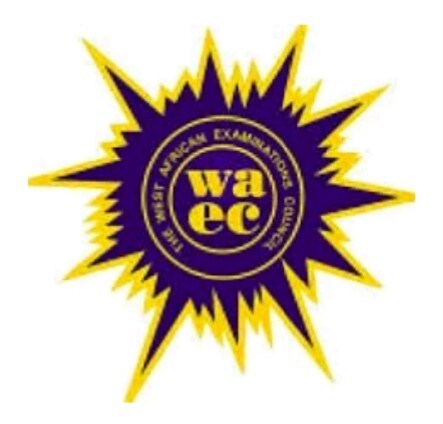If you’re preparing for the West African Examination Council (WAEC) Painting and Decorating exam, it is crucial to familiarize yourself with the syllabus.
About WAEC Syllabus for Painting and Decorating 2024/2025
This blog post will provide you with a simplified overview of the WAEC Painting and Decorating syllabus, including the aims and objectives, as well as the recommended textbooks for effective exam preparation.
Aims and Objectives
The WAEC Painting and Decorating examination aims to assess your knowledge and skills in various aspects of the subject.
The objectives of the examination include
- Knowledge of different types of Painting compositions.
- Skill in Painting and Decorating techniques.
- Understanding of modern trends in Painting and Decorating.
- Knowledge of applying Painting and Decorative arts to contemporary environments.
- Aesthetic awareness and appreciation.
- Understanding of job and wealth creation through Painting and Decorating.
Scheme of Examination
The WAEC Painting and Decorating examination consists of three papers: Paper 1, Paper 2, and Paper 3. All three papers are compulsory and must be taken.
Paper 1: This paper is a multiple-choice (objective) section with 40 questions to be completed in 1 hour, carrying 40 marks. The questions will cover all topics in the syllabus.
Paper 2: In this section, you will be presented with six essay-type questions. You are required to answer four of them within 2 hours, carrying 60 marks.
Paper 3: The practical paper, called Decorative Painting, requires you to attempt one task out of two alternatives. It lasts for 3 hours and carries 100 marks. The question paper and requirements will be provided two weeks before the examination, but the execution of the work will be supervised by WAEC during the exam.
Syllabus Overview
- Introduction to Painting:
- Understanding pictorial and decorative painting.
- Differentiating between pictorial and decorative paintings.
- Familiarizing yourself with the tools and equipment used in decorative and pictorial paintings.
- Learning about the elements and principles of design.
- Exploring the functions of pictorial and decorative painting.
- Colour Theory:
- Understanding the concept of colour.
- Differentiating primary, secondary, and tertiary colours.
- Exploring colour properties such as hues, tones, and intensity.
- Studying colour schemes like analogous, complementary, and monochromes.
- Discovering ways to improvise colours from local sources.
- Techniques in Painting:
- Exploring techniques in pictorial Painting, including dry painting, wet painting, glazing, impasto, fresco, and tempera.
- Understanding techniques in decorative Painting, such as flat painting, rag rolling, scumbling or combing, spraying, mural, and mosaic.
- Types and Functions of Pictorial Painting:
- Learning about still life Painting, nature Painting, and figure/life Painting.
- Understanding the differences between observatory and imaginative painting compositions.
- Exploring the various functions of pictorial paintings.
- Types and Functions of Decorative Painting:
- Exploring body decoration, including traditional and modern approaches, motifs and designs, materials used, and the importance of body decorations.
- Understanding wall decoration, including traditional and modern approaches, motifs, patterns, designs, materials used, and the importance of wall decorations.
- Perspective:
- Understanding the concept of perspective.
- Identifying different types of perspective.
- Recognizing the importance of perspective in pictorial painting composition.
- Prospects in Painting:
- Understanding the socio-economic value of pictorial and decorative painting.
- Exploring career opportunities in pictorial and decorative painting.
- Costing/Marketing of Paintings:
- Learning how to calculate the cost of pictorial and decorative painting based on factors like location, size of work, materials/equipment involved, time invested, quantity, and quality.
- Understanding the exhibition of paintings, including planning, processes, and funding.
- Exploring marketing strategies for paintings, including pricing, negotiation, communication (advertising/publicity), outlets for marketing, and selling.
Recommended Textbooks
- Painting and Decorating – An Information Manual by A. Fulker, Bill Stewart, D. Tikkle, and J. Windsor.
- Painting and Decorating Science by A. Fulker, Bill Stewart, D. Tikkle, and J. Windsor.
- The Complete Guide to Painting and Decorating by Editors of Creative Publishing.
- Dictionary of Painting and Decorating by J. H. Goodier.
- Painting and Decorating by J. H. Goodier.
- The Modern Painter and Decorator by Arthur Seymour Jennings.
- Handbook of Painting and Decorating Products by Albert Beckly.
FAQs on WAEC Syllabus for Painting and Decorating 2024/2025
What topics are covered in the WAEC Syllabus for Painting and Decorating 2024/2025?
The WAEC Syllabus for Painting and Decorating 2024/2025 covers a range of topics, including principles and elements of design, color theory, painting techniques, wall preparation, wallpapering, surface coating, decorative finishes, and health and safety measures. Students will also explore historical developments in painting and decorating as well as practical skills in creating decorative works.
How can I access the WAEC Painting and Decorating syllabus for 2024/2025?
The WAEC Painting and Decorating syllabus can be accessed online through the official WAEC website or obtained from schools and institutions offering WAEC courses. Many educational platforms also provide downloadable versions of the syllabus. Checking with your teacher or academic coordinator can also help in obtaining the official syllabus.
What practical skills are emphasized in the WAEC Painting and Decorating syllabus?
The practical skills emphasized in the WAEC Painting and Decorating syllabus include surface preparation techniques, brush and roller applications, mixing and applying paint, creating special finishes like marbling or wood graining, wallpaper installation, and using protective coatings. Students are also trained in safety protocols and the proper use of painting tools and materials to ensure professional-quality work.
Conclusion
Preparing for the WAEC Painting and Decorating examination requires a thorough understanding of the syllabus and the recommended textbooks.
By following the syllabus, focusing on the objectives, and utilizing the suggested resources, you can enhance your knowledge and skills in Painting and Decorating. Best of luck with your exam preparation!






